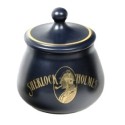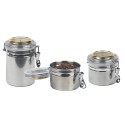Pipe Tobacco: Types and tips
There are different types of pipe tobacco, all with different characteristics, which we are sure will make you fall even more in love with the fascinating world of slow smoking!
What are the categories of pipe tobacco?
There is a classification of pipe tobaccos, which distinguishes three major categories, which we list below.
English Mixture
English Mixture is undoubtedly the best category of pipe tobacco to start with, because it is a mild blend, suitable even for the palates of novices.
English Mixture has various interpretations, which differ not a little from each other.
The element that most distinguishes it is Latakia, strongly present, often accompanied by Virginia, Orientals and other varieties.
It is a particularly popular blend in afternoon smokes, capable of getting both beginners and experts to agree.
Aromatic Tobaccos
Let us now turn to aromatic tobaccos, which undergo a special treatment, called “flavoring.”
A series of additives are applied that greatly change the flavor and fragrance of the tobacco.
The additives are mostly natural, such as brown sugar, cocoa, vanillin, essential oils or distillates.
This is probably the category that the neophyte should avoid, because its strong flavors can tingle the tongue, making it especially intense, and sometimes cloying, to smoke.
Natural Tobaccos
The more experienced smoker tends to prefer natural tobaccos because they are naturally flavored.
Let us be clear: these also undergo some treatments, but they are certainly less invasive than aromatics.
These treatments serve to ensure an adequate level of sugary substances, necessary to regulate two fundamental properties: moisture and combustibility.
Nowadays it is virtually impossible to come across pipe tobaccos in their pure state or untreated in any way.
What are the types of pipe tobacco?
Now it is time to review the different types of pipe tobacco.
Knowing the characteristics of pipe tobaccos will make it easier to choose the ones best suited to your needs.
There are many blending possibilities, each of which is created with more than one type of tobacco. At the same time, we can find pure tobacco blends, consisting of only one type of tobacco.
In this article, we will look at the peculiarities of the following tobaccos: Cavendish, Burley, Lakatia, Kentucky and Perique.
Cavendish
There are many blends that contain Cavendish as an ingredient, especially American, Dutch and Danish tobaccos.
The truth, however, is that Cavendish is itself a blend.
Generally, it is composed of varying amounts of Burley, Virginia and Orientals, but sometimes Kentucky as well.
To prepare Cavendish, one subjects the blend to a sweetening process, usually based on maple syrup, honey or molasses, applying an initial flavoring (curarine or cocoa) and maturation.
Next, it is cooked and eventually fermented, resulting in a smoother taste.
Cavendish is usually marketed in pressed “ready rubbed” cut, blended with other shreds, or added into English Mixtures.
Burley
Burley is a light air-cured tobacco (i.e., the category of light air-cured tobaccos), with a brown/brown-reddish color.
It is characterized by good combustibility and a light consistency.
It does not have a particularly intense aroma, which makes it perfect for accompanying other flavors due to the sponginess of the leaf.
Burley is frequently used in flavored blends, being subjected to various treatments, such as roasting and flavoring.
Latakia
Latakia is an oriental tobacco that is derived from dried plants that are then placed to smoke through aromatic wood fires.
This process gives it its distinctive dark color and aroma.
Its taste is sweet and, due to the presence of woody fragments within it, combustion is rather slow.
It is a tobacco that is very present in English Mixtures, because it gives a distinct aroma, as well as body and roundness.
Latakia has the peculiarity of aging well; in fact, its aromas and flavors tend to improve over time.
Kentucky
Let us now turn to Kentucky, which, unlike its predecessors, has a broad and consistent leaf, belonging to the dark-fired class, i.e., cured by direct fire of strong essences.
The color is dark brown and the intense flavor is reminiscent of wood, always offering a full and unforgettable taste.
It is a rather strong tobacco, not surprisingly used to make cigars such as Toscano, but also to impart body to the blend, as in Black Cavendish and English Mixtures.
Perique
Finally, we conclude the classification of the pipe tobaccos with Perique, a type of Burley, with the difference that it undergoes a lengthy double fermentation process.
Fermentation is achieved by periods of maceration, in which Perique leaves are contained in barrels, previously used for aging Bourbons.
Because of this lengthy aroma refining process, it is one of the most expensive and sought-after pipe tobaccos.
The aroma is spicy and intense, recalling the flavor of some wines. The appearance is oily and the color is tending to black, with a fragmented texture.
It is a really strong tobacco with low combustibility, which is added in small doses in English and American blends.
CLICK HERE FOR OUR REVIEWS OF TOBACCOS TO TRY
Pipe Tobaccos: Insight
English subtitles available.









